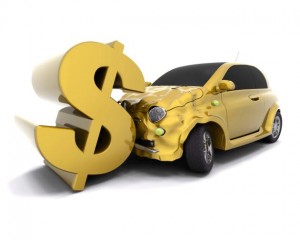 A previous article on carinsurancelist.com discussed rising instances of auto insurance fraud, strategies that state insurance regulators (and the insurers themselves) are implementing to combat fraud, and a basic overview of staged accidents. While every auto insurance policy holder is indirectly impacted by auto insurance fraud in terms of increased premiums, how would you know if an accident that you were involved in was staged, and if you were a direct victim of auto insurance fraud?
A previous article on carinsurancelist.com discussed rising instances of auto insurance fraud, strategies that state insurance regulators (and the insurers themselves) are implementing to combat fraud, and a basic overview of staged accidents. While every auto insurance policy holder is indirectly impacted by auto insurance fraud in terms of increased premiums, how would you know if an accident that you were involved in was staged, and if you were a direct victim of auto insurance fraud?
To start with, it’s likely that the circumstances surrounding the accident just don’t feel right to you. Maybe it’s the location, time of day, attitude of the other driver, or reaction of occupants in the other vehicle. Perhaps you were observant, and saw the other vehicle stopped at an intersection from quite a distance away, but it didn’t move – and then suddenly, as you approached the intersection, the car darted in front of yours before you could stop. The bottom line: trust your instincts.
Common Auto Insurance Fraud Schemes
According to the National Insurance Crime Bureau, the most common type of auto insurance fraud schemes are:
- Swoop and squat – this scheme involves three (or more) vehicles, with one in front driving off after the accident.
- Sideswipe – occurs at intersections with two left turn lanes.
- Panic stop – the driver in front of you suddenly slams on the brakes when he sees (in the rear view mirror) that you are momentarily distracted or looking the other way.
- Drive down – the driver of the fraud vehicle motions for you to proceed from a stop sign or merge, and then speeds up and hits you.
You are the Best Defense Against Fraud
Here are some tips for identifying and documenting auto insurance fraud when you’re involved in an accident. Fraudsters staging an accident have to make it look like you’re at fault. Providing that neither you nor another person involved in the accident is in need of immediate medical attention:
- Always wait for police to arrive and take a report, as they are trained to recognize the signs of a staged accident.
- Don’t exchange personal or insurance information with the other driver until police arrive.
- Don’t admit fault to the other driver.
- Be observant and do, if possible, write down your immediate recollection of the circumstances of the accident.
- If you have to move the cars before police arrive, and if you have a camera (use your cell phone camera if necessary), take as many pictures of the accident scene as possible before moving the vehicles.
- Never leave the scene of the accident, no matter how minor, until after police have assessed the accident, taken a report, and given you the ok to do so.
The information that you collect in the immediate aftermath of an accident is important to the accident investigation process. You are the first line of defense in determining if an auto insurance fraud scheme was the true cause of the accident. If your insurance company finds that auto insurance fraud is potentially involved, they’ll have the necessary evidence to press (or recommend) charges to the police.





